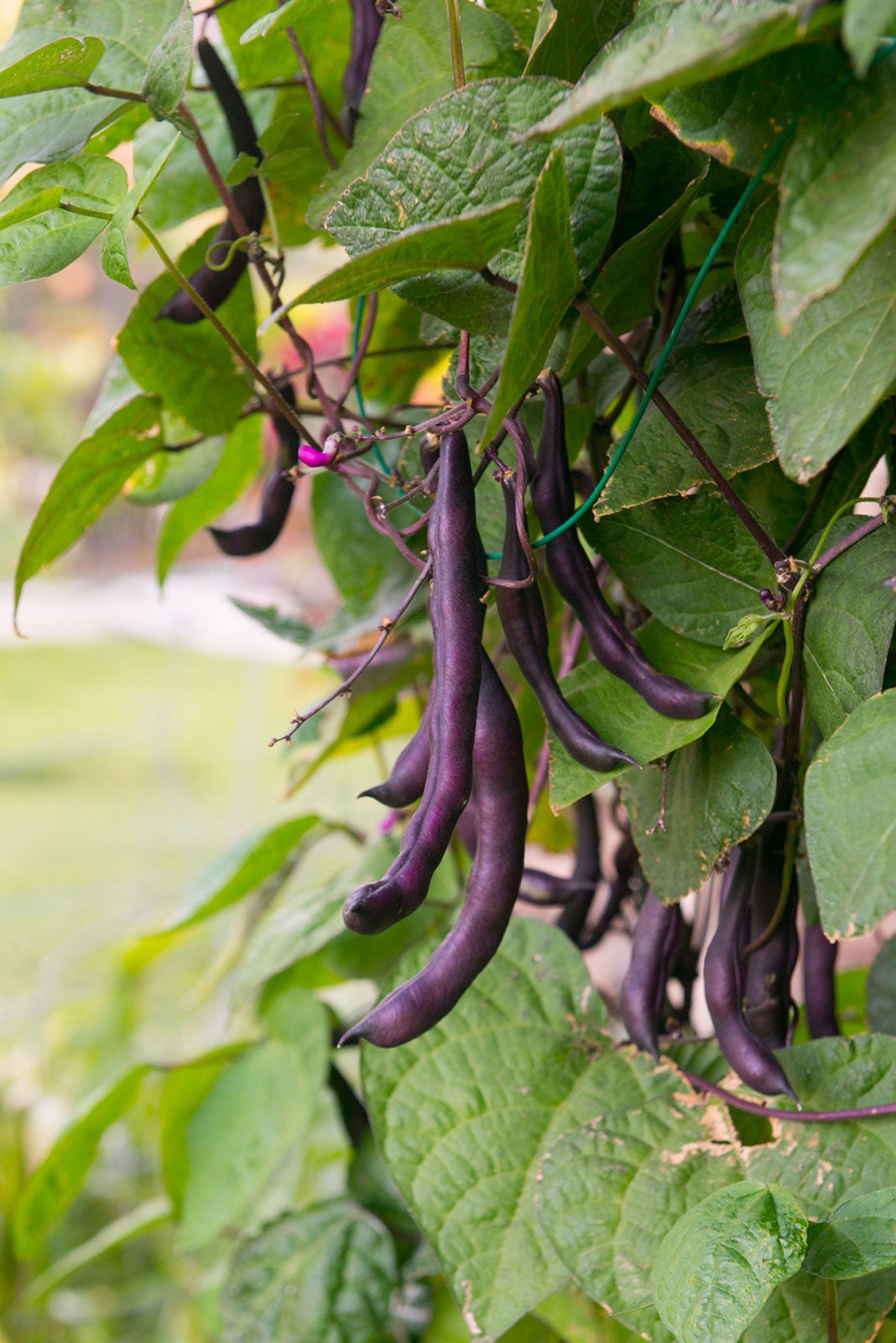Purple Pod Garden Bean: How To Grow Royalty Purple Pod Bush Beans


Planting a vegetable garden that is both beautiful and productive is of equal importance. With the rise in popularity of many unique open pollinated plants, gardeners are now interested in color and visual appeal more than ever. Available bush bean varieties are not an exception to this. Royalty purple pod bush beans, for example, produce a profusion of bright purple pods and leaves.
What are Purple Pod Garden Beans?
As the name would imply, purple pod garden beans are produced on compact bush plants. Reaching lengths of about 5 inches (13 cm.), royalty purple pod bush beans yield deeply colored pods. Though the pods do not retain their color after cooking, their beauty in the garden make them well worth planting.
Growing Royalty Purple Pod Beans
Growing royalty purple pod beans is very similar to growing other bush bean varieties. Growers will first need to select a weed free and well worked garden bed that receives full sun.
Since beans are legumes, first time growers may consider adding an inoculant to the planting process. Inoculants which are specifically for beans will help the plants better make use of nitrogen and other nutrients. When using inoculants in the garden, always make certain to follow the manufacturer's instructions.
When planting beans, it is best that the large seeds are directly sown into the vegetable bed. Plant seeds according to the package instructions. After planting the seeds roughly 1 inch (2.5 cm.) deep, water the row thoroughly. For the best results, soil temperatures should be at least 70 degrees F. (21 C.). Bean seedlings should emerge from the soil within one week of planting.
Beyond regular irrigation, bush bean care is minimal. When watering the bean plants, make certain to avoid overhead watering, as this can increase the likelihood of decline in bean plant health due to disease. Unlike some types of bean, Royalty purple pod beans do not require any trellising or staking in order to produce a quality crop.
Royalty purple pod beans can be harvested as soon as the pods reach the desired size. Ideally, the pods should be picked before the seeds within become too large. Over mature green beans may be tough and fibrous. Selecting beans that are young and tender will ensure the best harvest possible.
Gardening tips, videos, info and more delivered right to your inbox!
Sign up for the Gardening Know How newsletter today and receive a free copy of our e-book "How to Grow Delicious Tomatoes".

Tonya Barnett has been gardening for 13 years. Flowers are her passion. She has transformed her backyard into a cut flower garden, which she regularly chronicles on her YouTube channel http://www.youtube.com/@tonyawiththeflowers.
-
 Looking For Plants To Give You The Soft And Fuzzies? Try These 5 Fuzzy Leaf Plant Options
Looking For Plants To Give You The Soft And Fuzzies? Try These 5 Fuzzy Leaf Plant OptionsLovers of texture, drama, silver foliage and tactile plants will adore these special sensory garden additions. These fuzzy leaf plant options will leave you all aglow
By Susan Albert
-
 Get Ready For A Summer Of Hummers! Grow These Full Sun Hummingbird Plants and Flowers
Get Ready For A Summer Of Hummers! Grow These Full Sun Hummingbird Plants and FlowersIf you’re lucky enough to enjoy a sunny backyard, make sure you are maxing out on your pollinator opportunities and grow these full sun hummingbird plants and flowers
By Tonya Barnett